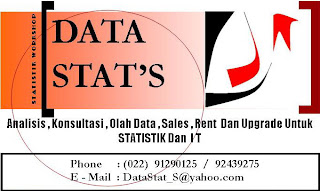Pearson's correlation coefficient is a parametric statistic and when distributions are not normal it may be less useful than non-parametric correlation methods, such as Chi-square, Point biserial correlation, Spearman's ρ, Kendall's τ, and Goodman and Kruskal's lambda. They are a little less powerful than parametric methods if the assumptions underlying the latter are met, but are less likely to give distorted results when the assumptions fail.
Other measures of dependence among random variables
The information given by a correlation coefficient is not enough to define the dependence structure between random variables. The correlation coefficient completely defines the dependence structure only in very particular cases, for example when the cumulative distribution functions are the multivariate normal distributions. (See diagram above.) In the case of elliptic distributions it characterizes the (hyper-)ellipses of equal density, however, it does not completely characterize the dependence structure (for example, the a multivariate t-distribution's degrees of freedom determine the level of tail dependence).
To get a measure for more general dependencies in the data (also nonlinear) it is better to use the correlation ratio which is able to detect almost any functional dependency, or the entropy-based mutual information/total correlation which is capable of detecting even more general dependencies. The latter are sometimes referred to as multi-moment correlation measures, in comparison to those that consider only 2nd moment (pairwise or quadratic) dependence.
The polychoric correlation is another correlation applied to ordinal data that aims to estimate the correlation between theorised latent variables.
One way to capture a more complete view of dependence structure is to consider a copula between them.
Search This Blog
Thursday, June 11, 2009
correlation coefficients
Non-parametric
Data Stat'S Is Just For You

Data Stat'S is Consultan that help you to make your statistic and IT work easy.
Data Stat'S is help work to proccesing statistic data from clien. To procces the data, we using SPSS software program, from that data procces we can have a result so we can know if they are valid or not valid so we can procces to other step.The clien use this analyst data result to make a progress report for their reasert, tesis and desertation.So with this Consultan we want to help the people to analyst and procces their statistic and IT data.With our experient to helping not only one or two clien and with our moto " Sampaikan Ilmu Walau Hanya Satu Ayat " insyaAllah we can help you.
Data Stat'S is help work to proccesing statistic data from clien. To procces the data, we using SPSS software program, from that data procces we can have a result so we can know if they are valid or not valid so we can procces to other step.The clien use this analyst data result to make a progress report for their reasert, tesis and desertation.So with this Consultan we want to help the people to analyst and procces their statistic and IT data.With our experient to helping not only one or two clien and with our moto " Sampaikan Ilmu Walau Hanya Satu Ayat " insyaAllah we can help you.
Wednesday, June 10, 2009
MathType

About MathType
MathTypeTM is an intelligent mathematical equation editor designed for personal computers running Microsoft Windows or the Apple MacOS. It’s an application that allows you to create complex equations through simple point-and-click techniques, and then use them in documents, Web pages, or markup-based systems like ATEXL and MathML. Using MathType in conjunction with a word-processing, page-layout, or graphics application, you can easily create tests and class notes, technical reports, view-graphs, research papers, dissertations, slides, and even entire books. MathType is also the professional version of the Equation Editor that comes with Microsoft Word, Corel WordPerfect and many other popular applications, and provides a seamless upgrade to the capabilities found in Equation Editor.
MathType’s User Interface
As with most Windows applications, the MathType user interface is intuitive and very visually oriented. For each basic mathematical construct, MathType provides a template containing symbols and various empty slots. There are around 175 templates in all, including fractions, radicals, sums, integrals, products, matrices, and various types of brackets and braces. You create equations simply by inserting templates and filling in their slots. You can insert templates into the slots of other templates, so complex hierarchical formulas can be built up in a natural way.
In addition, MathType provides on-screen icons for over 214 special mathematical symbols, many of which are unique to MathType and are not available in the standard Symbol font. You can insert these symbols into an equation simply by clicking on them — you don’t need to remember anything about fonts and keystroke combinations.
You can easily modify MathType’s user interface to speed up your work. It provides a set of customizable toolbars on which you can place templates, common equation fragments, or any character from any font on your computer. Then you can insert these items into your equations with just a single click.
Any of MathType’s symbols and templates, and most of its other commands and operations, can also be accessed via the keyboard, rather than the mouse. You can even design a custom keyboard layout to fit your own way of working.
Subscribe to:
Comments (Atom)